Poultry is one of the fastest-growing segments of the agricultural sector in India today. Chickens are the most common part of the poultry industry, but turkeys, ducks, and geese are also included in the same. This poultry industry faces challenges in the form of bacterial and viral diseases, which creates economic losses and decreases productivity.
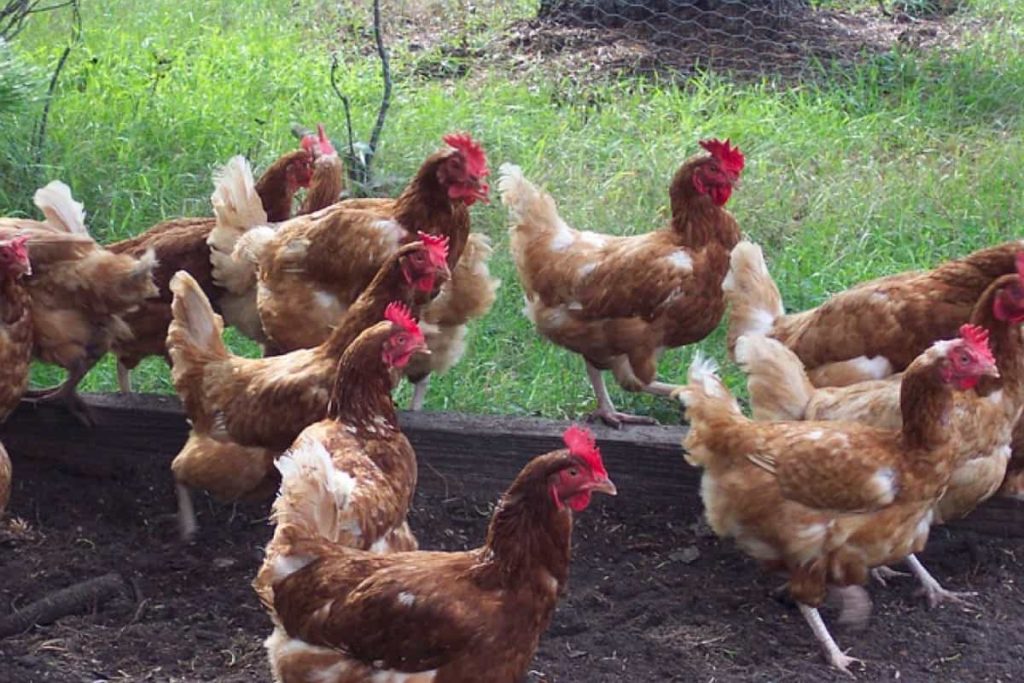
Common Poultry/Chicken diseases, symptoms, and treatment
What causes Colibacillosis in chickens?
Colibacillosis, also called E. coli infection, is one of the most commonly seen upper respiratory diseases in the poultry industry, which is a typical bacterial disease caused by pathogenic Escherichia coli (E. coli). It causes illness and death in chickens, turkeys, etc. With the increasing incidence rate and mortality rate, Colibacillosis has become a frequent and frequently-occurring disease nowadays.
This bacterial infection enters chickens by inhalation or oral route and via yolk/shell membranes/navel, water, and fomites. Infections may cause a respiratory disease from air sac infection, a septicaemic disease from generalized infections, or enteritis from an intestinal infection.
What are the symptoms of Colibacillosis in poultry?
The symptoms of this disease are caused by the E. coli bacteria and the toxins produced as they grow and multiply in the internal organs. This bacterium is normal inhabitants in the intestinal tracts of chickens. Signs of Colibacillosis are poor growth, suffering from respiratory distress, coughing, sneezing, and reduced appetite. At post-mortem, airsacculitis, pericarditis, perihepatitis, and peritonitis lesions can be seen.
What is the prevention of Colibacillosis?
The best way of decreasing the potential impact of Colibacillosis infection is to reduce the amount of environmental and health stress on the bird. Employ good ventilation so poultry litter stays dry, and provides sufficient feed and water, so all birds get their fill. Reduce and prevent bird exposure to other bacteria and viruses by practicing strict biosecurity measures. Prevention of Colibacillosis depends on proper management to reduce exposure of birds to E. coli bacteria. In addition, experimental and commercial vaccines have been used to prevent Colibacillosis.
How do you treat Colibacillosis in chickens?
Antimicrobial drugs have been used in the olden days to treat and control Colibacillosis. The availability of effective antimicrobials has decreased due to the lack of new drug development in the poultry sector. Antibiotics consist of fluoroquinolone prescribed by veterinarians to reduce the early baby chicken death toll and reduce the transmission of Escherichia Coli. Consult a poultry veterinarian before commencing any treatment plan. The availability of drugs and local regulations may vary.
How common is Mycoplasma in chickens?
Mycoplasma is the most frequently seen in backyard chicken flocks which causes upper respiratory infection. The characteristic signs of naturally occurring infections are nasal discharge, watery eyes, tracheal rales, and coughing. Real-time PCR is the most common test for diagnosing this infection in chickens.
Organisms in Mycoplasma are a significant cause of respiratory disease in poultry. Of the numerous species of Mycoplasma, Mycoplasma Gallisepticum and Mycoplasma Synoviae can cause chronic respiratory disease & infectious synovitis in chickens.
In case you missed it: Common Goat Diseases, Symptoms, and Treatment: Check How this Guide Helps Goat Farmers
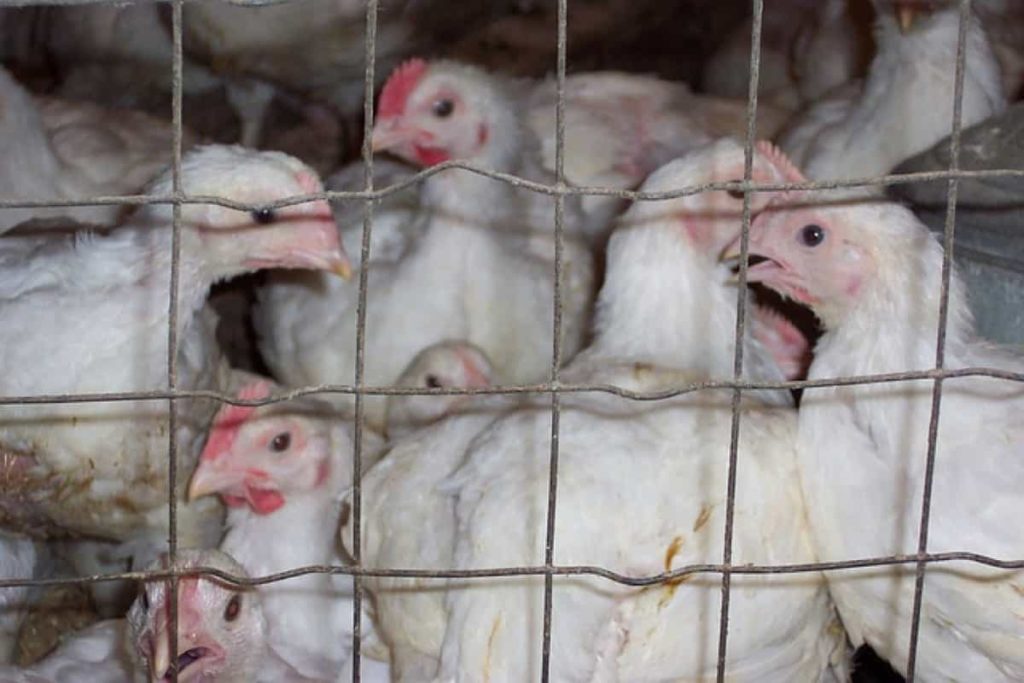
How is Mycoplasma spread in chickens?
Mycoplasma can be transmitted from Hens through their eggs to their baby chickens. Birds with Mycoplasma can spread it even before indicating symptoms. Keep away the infected chickens separately from healthy birds as the infecting bacteria can spread from the droppings and feathers of infected birds and also through the dust in the air.
What are the symptoms of Mycoplasmosis in poultry?
Birds sick with Mycoplasma Gallisepticum may have similar signs to what people get with a cold: runny nose, swollen or puffy eyelids, and face, cough, or unusual breathing sounds. Birds sick with Mycoplasma Synoviae may be unable to stand or walk properly, have a pale or discolored comb, freckled skin, ruffled feathers, swollen joints, and blisters. The common characteristic signs of this infection are heavy nasal discharge, watery eyes, tracheal rales, and coughing. Chickens will weigh less weight due to a low food consumption rate.
How do you treat Mycoplasma Synoviae in chickens?
There is no treatment for Mycoplasma, and once a bird is infected with it, it will have it for life and will infect other healthy birds when they come into contact. There are some antibiotics available through poultry veterinarians that may decrease the signs of Mycoplasma and speed up the recovery. Still, no treatment will stop it from transmitting to other birds. If the Mycoplasma symptoms are seen in the chickens, the lab or veterinarian can advise what to do.
How does a chicken get fowl cholera?
Fowl cholera is an acute infectious bacterial disease seen in chickens, turkeys, pheasants, pigeons, waterfowl, and sparrows. Pasteurella multiocida, a gram-negative bipolar bacterium, can cause fowl cholera in chickens. The organism is fairly strong and can survive at least one month in droppings, three months in decaying dead chickens, and 2–3 months in the soil where the infected chickens lived.
Pasteurella enters the chicken’s mouth and upper respiratory tract tissues and is not spread through the egg but transmitted through contaminated feed, water, equipment, clothing, droppings, and nasal discharges.
What are the symptoms of fowl cholera?
In acute fowl cholera, many birds will die suddenly without any previous signs, which is the first indication of the disease. Mortality increases very rapidly once this infection is found in poultry farms. In more prolonged cases, birds can be seen with a symptom of mucoid discharge from the mouth, ruffled feathers, watery yellowish or green diarrhea, depression, lameness resulting from joint infection, anorexia, and increased respiratory rate.
How is Fowl cholera treated in poultry?
Fowl cholera can be treated with antibiotics because fowl cholera is caused by a bacterium. Thorough sanitation, rodent control, and a strict biosecurity plan are necessary to prevent infection. Vaccines are available to help control an outbreak within a flock. More attention is needed to vaccine storage as the vaccine should be protected from freezing, heat, and direct sunlight. Give the vaccination to the neck, the needle pointing away from the chicken’s head or intramuscularly in the breast muscle.
What causes necrotic enteritis in chickens?
Necrotic enteritis is an infectious bacterial disease caused by the organism Clostridium perfringens; Type C can be seen in foals, calves, lambs, and piglets, characterized by acute diarrhoea and death. Necrotic enteritis is a bacterial disease that results in the marked destruction of the intestinal lining of the digestive tract.
Most of the damage that happens to the intestinal lining apparently is due to toxins produced by bacterial organisms. This infection is transmitted by oral contact with the droppings from infected birds. Apparently, healthy birds will become acutely depressed and die within less span.
What are the signs and symptoms of necrotic enteritis in poultry?
The most common symptoms in necrotic enteritis-affected birds are severe depression, diarrhea, dehydration, decreased feed consumption, ruffled feathers, and reluctance to move. Along with the necrotic lesions, abundant mucus and cellular sloughing are found in the intestinal lumen. The presence of congestion, mucus, and cellular sloughing without the characteristic necrotic lesions corresponds to general enteritis and is not necrotic enteritis.
In case you missed it: Poultry Farming Subsidy and Loan Information in India
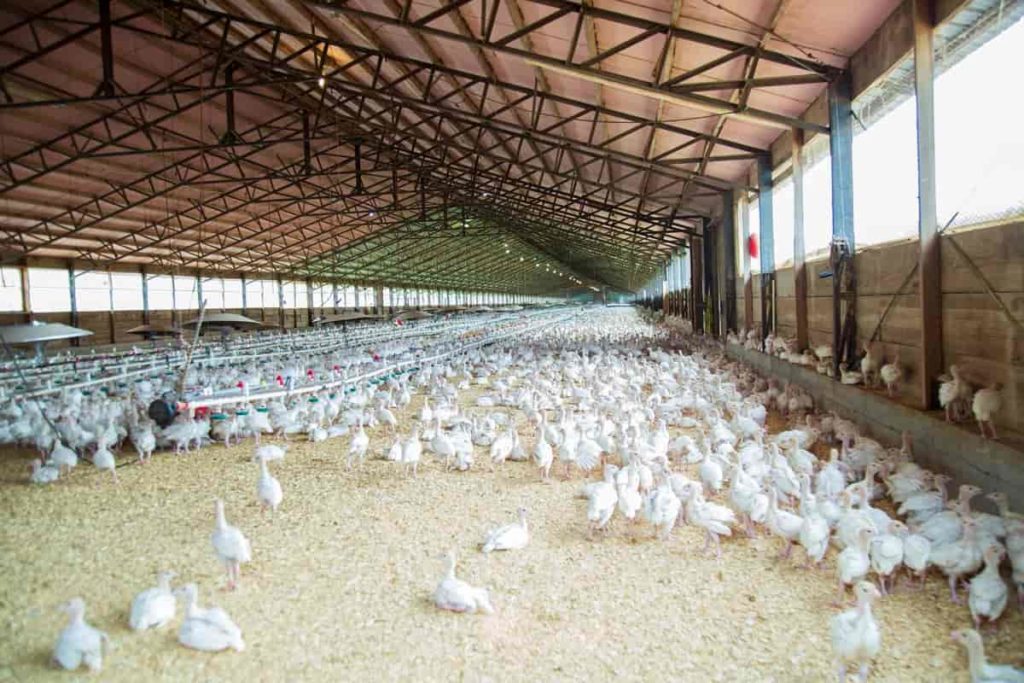
How do you treat necrotic enteritis in poultry?
Treatment for necrotic enteritis is commonly administered in drinking water. Separate infected birds from healthy ones and give them antibiotics through food and water. In each case, the medicated drinking water should be the only water source. Moribund birds should be separated immediately from healthy birds because they can serve as a source of infection due to cannibalism.
What causes pullorum disease in chickens?
Pullorum is an infectious poultry disease caused by Salmonella enterica Pullorum and is signalized by very high mortality in young chickens and turkeys. Affected birds huddle near the heat source, are anorectic, weak, depressed, and have white faecal material pasted to the vent area. The acute or chronic infectious disease affects mainly baby chickens but can also affect birds, guinea peafowl, ring doves, sparrows, and turkeys.
This organism is basically transmitted by eggs, but transmission may occur by other means such as infected hen to egg, baby chicken to baby chicken in an incubator, or egg to baby chicken. Pullorum disease is highly fatal and can cause death to young baby chickens.
What are the signs and symptoms of Pullorum disease in poultry?
Pullorum infection in young birds may be indicated by a chilled appearance with birds huddling near a source of heat, ruffled feathers, and the presence of white diarrhea with a pasted-down appearance around the vent. Poor hatchability, anorexia, depression, high fever, labored breathing, droopiness, and increased mortality can also be seen as symptoms of this fatal disease.
How do you treat pullorum disease in poultry?
The disease is not treatable. The best prevention method is routine Pullorum-Typhoid testing of breeder flocks, purchasing birds from National Poultry Improvement Plan participants, and effective biosecurity to avoid transmission of this fatal disease from infected birds to healthy birds. Do not keep recovered flocks from infection for egg production. The drugs used in treating pullorum disease are furazolidone, gentamycin sulphate, and sulfa drugs to recover the birds up to some extent, but they are not completely curable.
What causes fowl typhoid in poultry?
Fowl typhoid is an infectious, most contagious bacterial disease that is usually acute but sometimes chronic. The cause of bacterium for this disease is Salmonella Gallinarum. Most domestic and wild fowl, including chickens, pheasants, turkeys, ducks, pigeons, and other game birds, are affected by this disease. Methods of transmission are the same for this disease as for pullorum disease, including egg transmission. This infectious poultry disease is characterized by diarrhea, anaemia, and prostration.
What are the symptoms of fowl typhoid in chickens?
Infected baby chickens exhibit poor appetite, stunted growth, and weakness and may make shrill chirping and peeping sounds. In addition, their droppings are chalky white. In the five to ten days after infection, signs of this disease may not appear. Signs include sudden or sporadic mortality, listlessness, anemic appearance of comb, green or yellow diarrhea, increased thirst, and pale and wattles.
How do you treat fowl typhoid in chickens?
There are no specific drugs identified till now for treating Fowl typhoid. Drugs cannot prevent Fowl typhoid and are not suggested for that purpose. Infected birds may be treated using the same drugs as pullorum-infected birds. Vaccines may be used to prevent the disease, and antibiotics to treat Fowl typhoid.
In case you missed it: How to Grow Curry Leaf/Kadipatta Plant at Home: Check How this Guide Helps Beginners
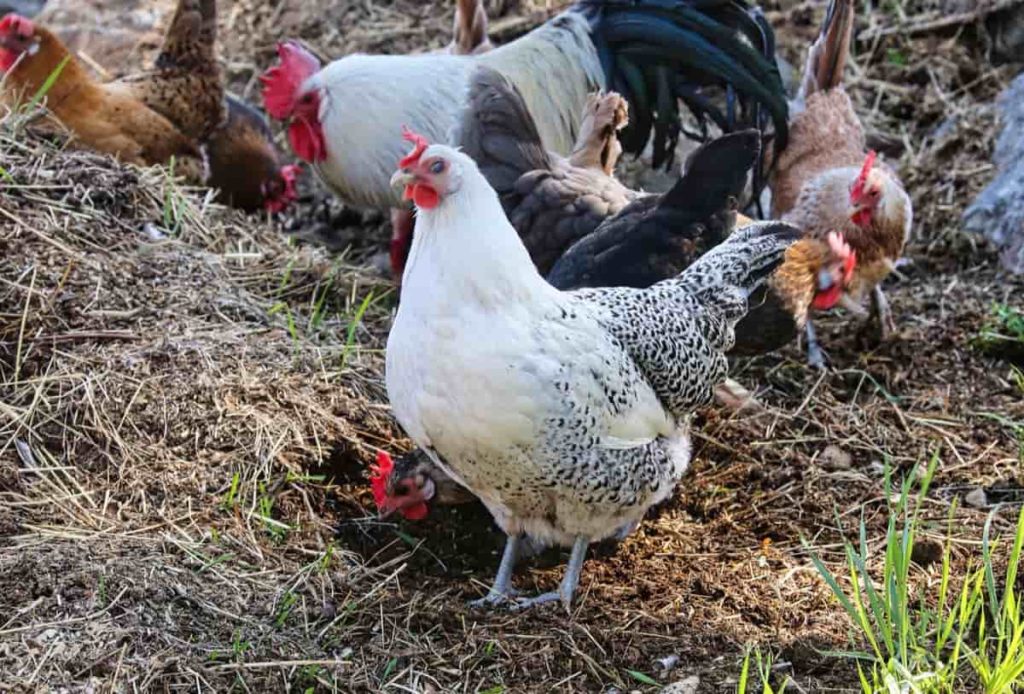
What causes botulism in chickens?
Botulism can be seen occasionally in poultry raised under conditions where poor hygiene and birds have access to contaminated or decaying material. Botulism is not transmitted from birBotulism can infect birds by botulism when they eat spoiled feed or infected carcasses. Birds that die from botulism become infested with maggots, perpetuating the outbreak in what is known as a carcass-maggot cycle. Evidence suggests that botulism may also result from directly ingesting decaying organic matter containing toxins.
What are the symptoms of botulism?
A chicken with typical signs of botulism is weak and unable to stand, has droopy wings, a floppy neck, cannot hold its head up, and has closed eyes. Usually, affected birds are found sitting or lying on the ground and unable to stand. Symptoms first appear 12 to 48 hours after the toxin has been ingested. Affected birds will first appear weak, exhausted, and reluctant to move.
What do you give chickens with botulism?
When birds eat contaminated food, flush the flock with Epsom salts (1 lb. per 1000 hens) in water or wet mash. Clinical trials have proved that mixing potassium permanganate in drinking water can counteract botulism. Botulism is best prevented by removing dead birds daily, removing the source of the toxin, supplying clean feed and water, keeping birds away from stagnant or pooled water, and providing feed in containers and not on the ground.
What causes fowl pox in chickens?
Fowl pox is a slow-spreading viral infection in chickens and turkeys characterized by proliferative lesions in the skin that progress to thick scabs and lesions in the upper gastrointestinal and respiratory tracts. Virulent strains can cause lesions in the internal organs. Fowl pox is a viral infection that is common in chickens. Chickens will recover easily from the milder forms of fowl pox.
Fowl pox is transmitted to flocks primarily through biting mosquitoes, or new birds introduced to the flock will be latent carriers of the disease. A mosquito feeding on an infected bird can keep the virus in her salivary glands for up to 8 weeks.
What are the signs and symptoms of fowl pox in poultry?
Chickens with Fowl Pox will often exhibit a drop in egg production, weight loss due to low appetite, and tell-tale skin lesions or lesions inside the mouth and throat. Symptoms generally occur for several weeks in a bird and several months in a flock.
Fowl pox is divided into two categories, dry pox, and wet pox.
Dry pox causes sores on areas of the head, legs, and body parts that do not have feathers. These pores begin as small blisters and then grow into wart-like growths on the skin of any unfeathered area like the face, comb, wattles, eyelids, feet, and legs. These pox lesions will often change to dark brown as they grow larger, eventually turning into roughened, dry scabs. The scabs generally last about 2 to 4 weeks and then loosen and drop off
Wet pox is generally associated with cases of higher mortality rates. Wet pox causes pores in the throat and respiratory tract that often begin as small that may develop into large patches that look yellow over time.
How do you treat chicken fowl pox?
There is no treatment for Fowl pox. Vaccinate the baby chickens by the wing web method with a commercially available fowl or pigeon pox vaccine for control and prevention in chickens. This vaccination should be administered to all chickens at 12-16 weeks.
Vaccination of broilers is generally not required if the mosquito population is not high or infections have not occurred previously. The baby chickens will be vaccinated as young as one day by using the wing-web method and a one-needle applicator. All replacement chickens are vaccinated against fowl pox when the birds are six to ten weeks of age. One application of the fowl pox vaccine results in permanent immunity.
In case you missed it:Best Practices to Grow Green Chilli (Mirchi): The Best Guide for Beginners
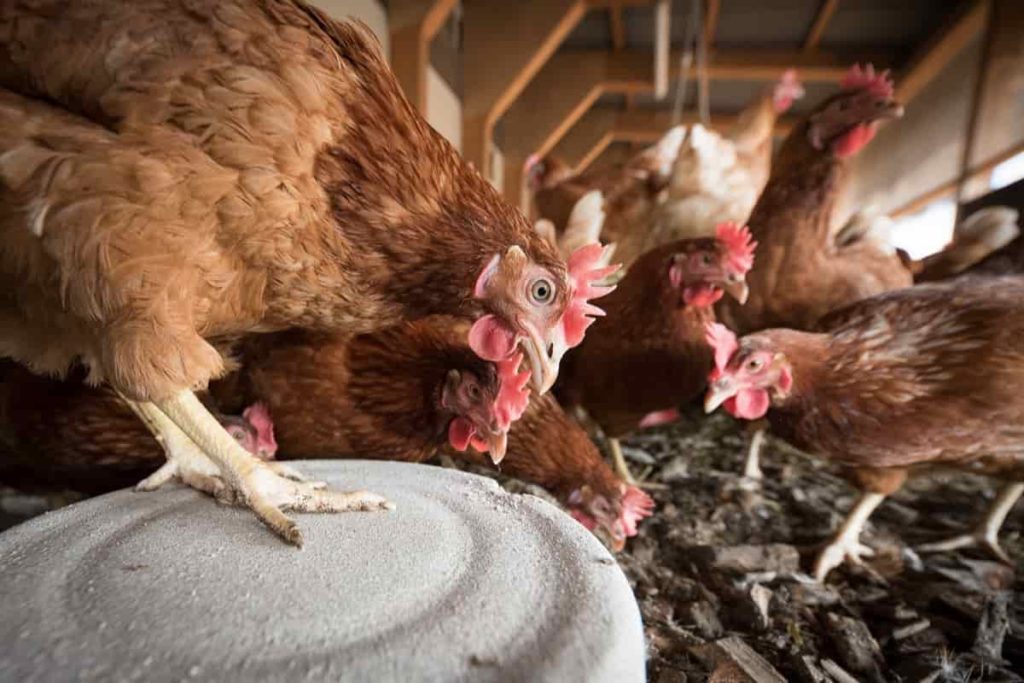
What are the causes of avian influenza in poultry?
Avian influenza is also called bird flu. Avian influenza Type A virus causes this disease. These viruses are naturally transmitted among wild aquatic birds worldwide and can infect poultry and other bird and animal species. Avian influenza A viruses can be detected in the saliva, nasal secretions, and faeces of Infected birds. Healthy birds become infected when they have contact with the virus-infected birds. They can also become infected through contact with surfaces contaminated with viruses from infected birds.
What are the symptoms of avian flu in chickens?
In general, infected birds look sick. They may have severe diarrhea and a cough. Chickens and turkeys will die rapidly from the disease. Some of the signs of avian influenza include eating less, coughing, sneezing, nasal discharge, purple discoloration around the face, reduced egg production, lack of energy, swelling around the face, lack of coordination, diarrhea, muscle tremors, drooping wings, twisting of the head and neck, inability to move, and reduced egg production.
How do you treat flu in chickens?
There is no treatment for Avian Influenza. Once bird flu symptoms are identified as active, the entire flock must be culled. There are no halfway measures here. Nearby flocks, including backyard chickens, will be kept under strict biosecurity measures and quarantined if there is any possibility that they have also become infected.
What causes Newcastle disease in poultry?
Newcastle disease is a contagious viral disease in birds. This disease is caused by a para-myxo virus. Birds affected by this disease are poultry birds, turkeys, geese, ducks, pheasants, and partridges. It is a worldwide problem that presents as a fatal respiratory disease, although depression, nervous manifestations, or diarrhea is the predominant clinical form.
What are the signs and symptoms of Newcastle disease in poultry?
Newcastle disease is a most contagious viral disease of birds caused by a para-myxo virus. Newcastle disease only affects poultry birds, such as chickens and turkeys. It can cause illness to the poultry birds, which leads to death in large numbers very rapidly. Infected birds may show low appetite, coughing, gasping, nasal discharge, watery eyes, bright green diarrhoea, and nervous signs such as paralysis and convulsions.
What is the treatment for Newcastle disease in poultry?
Currently, there is no treatment for Newcastle disease is a viral However, antibioticsAntibiotics can be suggested for three to five days to prevent secondary bacterial infections. Vaccines are available for birds and are routinely used in the poultry industry. However, 0.4-0.6% garlic addition in drinking water effectively reduced mortality rate and enhanced immunity against Newcastle disease virus in vaccinated broiler chickens against Newcastle disease.
What is favus disease?
Favus or tinea favosa is a severe and chronic inflammatory dermatophyte infection. Favus or tinea favosa is in most cases a severe form of tinea capitis. Trichophyton schoenleinii fungus causes this disease and results in honeycomb destruction of the hair shaft. Although favus is not highly contagious, several family members may be affected, and all should be treated simultaneously.
What are the signs and symptoms of Newcastle disease?
Symptoms of Newcastle disease include low appetite, gasping, nasal discharge, watery eyes, bright green diarrhoea, coughing, and nervous symptoms such as paralysis and convulsions. Combs and wattles may be swollen, discolored to purple or blue, thick crusty skin, and feather loss starting at the caudal base of the comb and progressing down the neck in infected chickens. White, powdery spots, wrinkled crusts, and scabs on comb and wattles are also seen in infected birds.
In case you missed it: Poultry Farming Information Guide
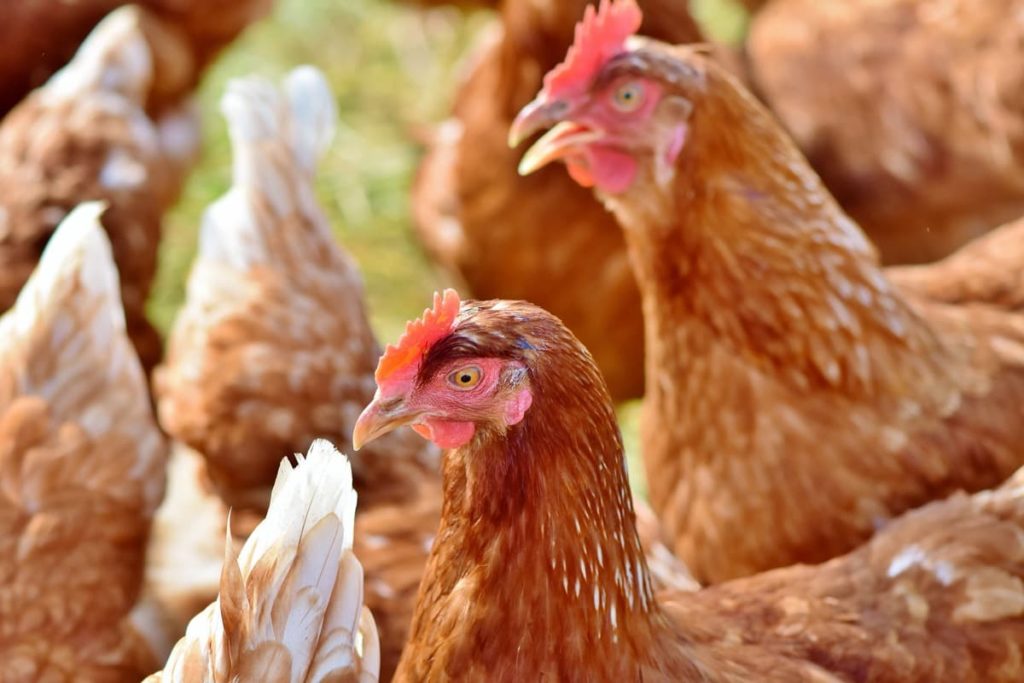
How do you treat chicken favus?
Consult a poultry veterinarian before commencing any treatment plan. The availability of drugs and local regulations may vary. Favus has reportedly been successfully treated by rubbing lesions with an ointment of formaldehyde and Vaseline. This involved melting the Vaseline in a jar in a water bath and adding 5% by weight of formalin, and shaking the mixture.
Conclusion
Breeding the baby chickens from healthy flocks and maintaining hygienic environments can control disease infection in the poultry industry. Vaccinate the baby chickens to prevent diseases that do not have a treatment.
- Effective Fish Pond Construction Techniques for Beginners
- Irrigation and Water Management in Pineapple Farming
- Blossom to Harvest: Mastering Flowering and Pollination in Papaya Farming
- Pig Fattening Essentials: From Selection to Sale for Beginners
- Raising Wagyu Cattle: A Complete Guide for Premium Beef Production
- Soil Types and Their Water Holding Capacity
- Optimizing Irrigation Schedules for Coconut Groves for Enhanced Yield
- Espresso Your Garden: Coffee Grounds for Healthier Acid-Loving Plants
- The Best Soil Mix for Snake Plants: How to Mix Your Own Snake Plant Soil
- Green Thumb Success: Expert Tips for Cultivating Greenhouse Beans All Year Round
- Bloom All Year Round: The Ultimate Guide to Indoor Hyacinth Care
- Eco-Friendly Gardening: How to Make Liquid Fertilizer from Kitchen Waste
- Ultimate Guide to Grow Anise in Pots: Explore Seed Propagation to Harvesting
- Guide to Raising Chester White Pigs: Discover Breed Facts to Growth Management
- Mastering the Elegance: The Ultimate Guide to Weeping Cherry Tree Care, Planting, and Maintenance
- Ultimate Guide to Planting Garlic in Grow Bags: Growing Strategies for Beginners
- How to Fix Spider Plant Leaf-Related Problems: Natural and Organic Remedies
- 10 Reasons Why Your Tulsi Plant is Shedding Leaves: Home Remedies and Solutions
- Optimizing Growth and Yield: The Advantages of Palm Bunch Ash Fertilizer
- Utilizing Neem Oil Extract as a Natural Pesticide for Hydrangea
- From Soil to Harvest: Various Ways in Which Farmers Can Use AI Tools
- Steps to Encourage and Induce Citrus Flowers: A Comprehensive Guide
- How to Fix Snake Plant Leaf-Related Issues: Natural and Organic Remedies
- Transform Your Garden into a Fragrant Oasis with Raat Ki Rani (Night Blooming Jasmine)
- Discover the Ideal Chicken Breeds for Philippine Farms
- How to Create a Poultry Egg Farm Business Plan for Profits
- Grow Lemon Cucumbers Like a Pro: Insider Techniques for Bountiful Yields
- Ultimate Guide to Caring for Your Pink Princess Philodendron: Tips for Thriving Variegation
- Areca Nut Profit Per Acre: Calculating Yield and Cost of Cultivation
- How Kaveri Chicken is Becoming a More Profitable Breed in Indian Backyards
- Transform Your Barn: 9 Steps to Convert a Horse Stall into a Chicken Coop
- Exploring Suffolk Sheep Disadvantages with Limitations and Challenges
- Guide to Solving Potted Lemon Tree Problems: How to Revive Lemon Tree in Containers
- Steps to Encourage Female Pumpkin Flowers: Best Strategies for More Flowers and High Yields
- Ultimate Guide to Yellow Raspberries: Exploring from Planting to Care
- Ultimate Guide to Planting Ginger in Grow Bags: Growing Strategies for Beginners
